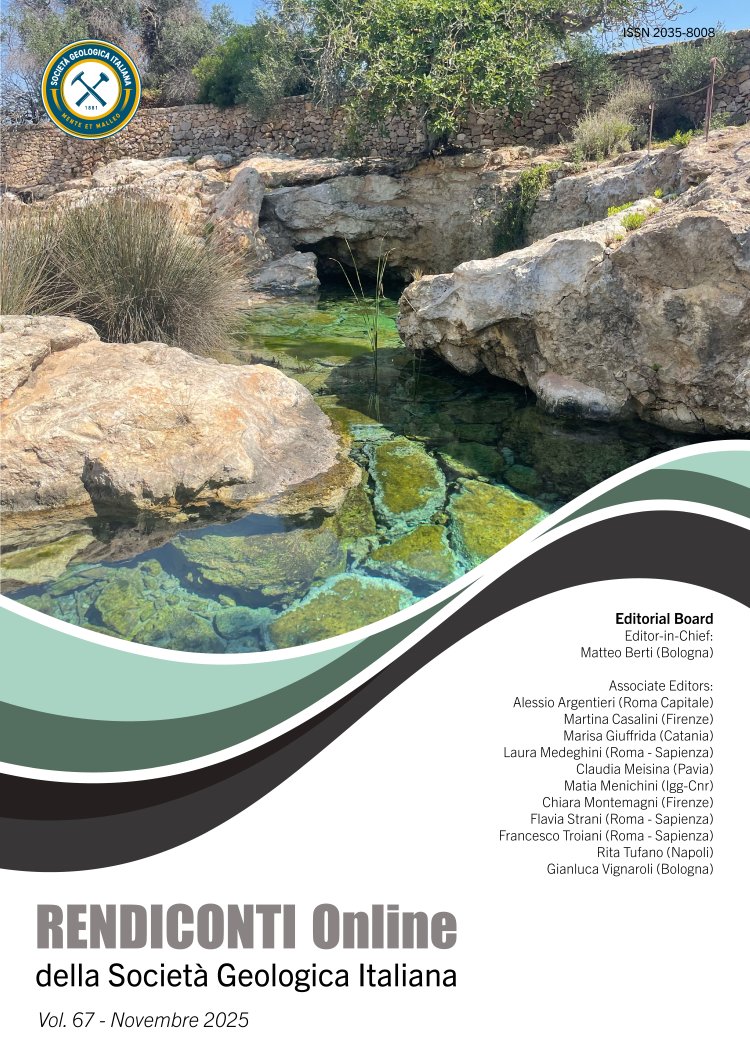
Artificial cavities and sinkholes in the hydrographic district of the Southern Apennines of Italy: findings, mapping and risk assessment
Daniela Ruberti1, Carla Buffardi1, Maria Assunta Fabozzi1, Isabella Serena Liso2, Piernicola Lollino2, Carmela Vennari3, Marco Vigliotti1, Gennaro Capasso4, Vera Corbelli4 & Mario Parise2
1Dipartimento di Ingegneria, Università degli Studi della Campania "Luigi Vanvitelli", via Roma 9, Aversa (CE), Italy.
2Earth and Environmental Sciences Department, University Aldo Moro, Bari, Italy.
3Institute of Research for Geo-Hydrological Protection, National Research Council (CNR-IRPI), Bari, Italy.
4Autorità di Bacino Distrettuale dell'Appennino Meridionale, Caserta, Italy.
Corresponding author e-mail: daniela.ruberti@unicampania.it
Volume: 67/2025
Pages: 9-14
Abstract
The territory managed by the Hydrographic District of Southern Apennine (Autorità di Bacino Distrettuale dell’Appennino Meridionale - ADAM), in southern Italy, is subject to geological hazards connected to the presence of cavities in the subsoil. These represents a serious problem, especially in intensely urbanised areas where the stability of urban structures is often compromised by the presence of underground voids, locally forming a well-developed network of cavities, deriving from decades of excavation activities. Aimed at developing a Management Plan relating to Cavities, a scientific collaboration agreement was signed between the ADAM, the Department of Earth and Environmental Sciences of the University of Bari Aldo Moro and the Engineering Department of the University of Campania Luigi Vanvitelli. Objectives of the research are the census, analysis and evaluation of the cavity system on the territory of the district.
The methodology developed for the identification of cavities is described here, based both on documentary sources and on a “top-down” approach by creating a lithological map and selecting those lithologies potentially interested by underground excavation activities. The data were managed in a GIS environment.
The first results are presented here and provide a first characterisation of the extension of the phenomenon.
Keywords
Get Full Text